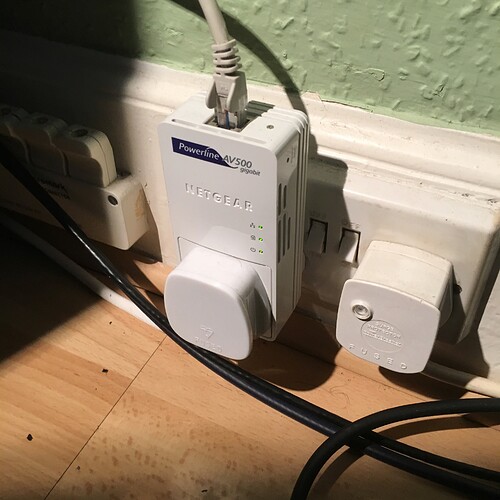Hi th0m,
I am using the following settings on my RPi 2:
192.168.1.11:/mnt/movies /mnt/osmc-movies/ nfs x-systemd.automount,_netdev,nfsvers=3,ro,intr,noatime,rsize=32768,wsize=32768,nolock,async,proto=udp 0 0
In your line, you force the protocol to run over TCP, what is potentially a bit slower than using UDP (proto=udp). In @flori4n’s line protocol is omitted, but if I recall it, it defaults to UDP. My buffers are a bit bigger, but that may not have as much difference as the UDP protocol choice (at some point buffer sizes are not improving too much, maybe 16k/32k are already in that range). Also, @flori4n’s line is asking for nfs v4, what my server is not supporting (or maybe at that time RPi was not supporting), but could be potentially a plus to have. Since I don’t care for write access on the RPi side, my line also have ‘ro’ (read only). I am not sure whether ‘async’ may help or not. So using settings from @flori4n and my lines should get you close to the best NFS settings. If that doesn’t fix all your problems, you will need to also start looking into your WiFi setup.
As far as WiFi, if you don’t live in an apartment, and don’t have much interference, then WiFi channel selection may not do anything for you. If you do, instead of guessing a channel number, you would need to use some app to see which channels are less busy (less routers are using them). (Netgear has a nice Android app for that.) However, if you could get to a 5GHz range, your speed may be better (usually less crowded, but in a single home may not have the reach). However, if I recall it right, RPi USB implementation may not be giving you the full USB2 speed, so switching from 2.4 to 5GHz may not really improve it that much.
With all that said, my setup is over the Ethernet cable, and if I recall it, it gives me ~10-12mbps max speed what potentially is max what you get over the Ethernet on RPi 2. As you can see, that is well below 100mbps Ethernet speed, and well below any decent WiFi router.
Best,
Jacek
